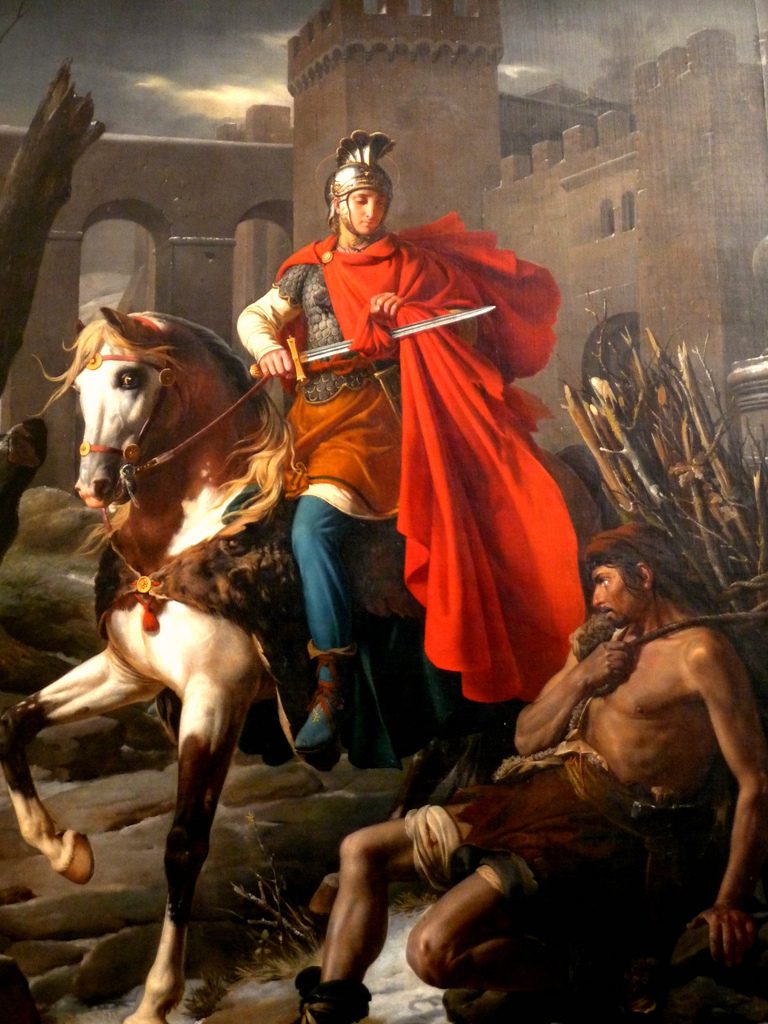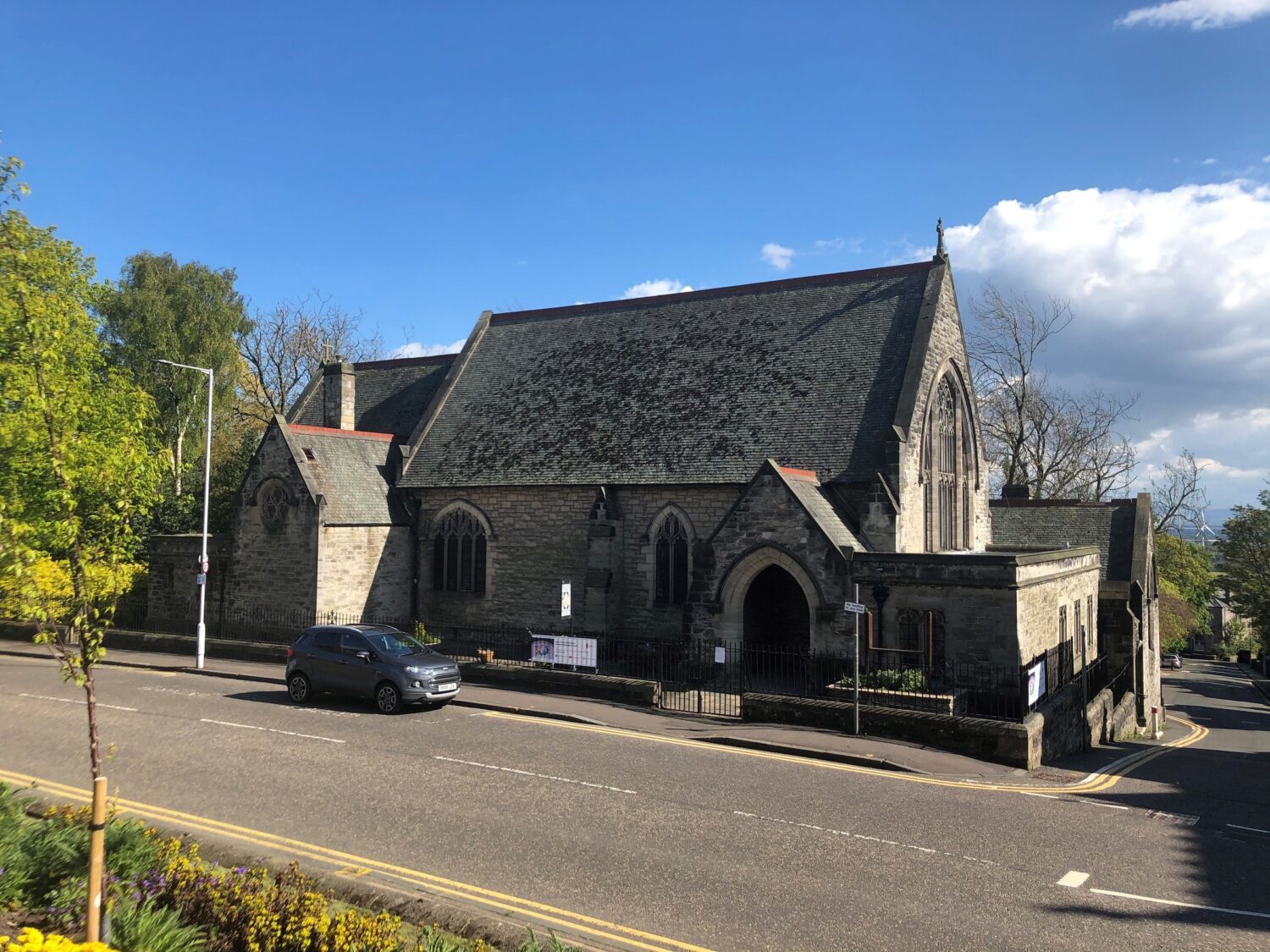Wondering who to select in the month before Christmas’s saint I looked at the Anglican Calendar and came across St Martin which reminded me that his name was mentioned in the lives of two saints I have previously featured, namely Saint’s Patrick and Ninian. Looking him up on the internet and found an interesting story mixing folk belief with true fact showing his real importance in the early church.
We are not sure of the year of his birth which may have been 316 or 336 but we do know that he died in 397. He was born at Savaria in Pannonia (modern day Hungary) which was the home of his family. His father was the Tribune in the Imperial Horse Guards. When he was ten and the family were in Northern Italy he became a catechumen in the Christian Church which by that time had been legalised under the Roman Law. This was against the wishes of his parents who still adhered to the old Roman faith of Mithras worship. At the age of 18, being the son of a Tribune he had to join his father’s regiment and served in it as the cavalry escort of the Emperor Caesar Julian and at various postings in Gaul and Germany.
It is during this period that one of the first and most famous legends about him arose. It is said that while out riding in his cavalry uniform of an officer he met a poor half naked beggar. He took off his long flowing cape and cut it in two with a slash of his sword and gave half to the beggar. It is said that he had a dream that night in which he saw Jesus clothed in the half cloak saying to the angels “Martin gave me this cloak”.

Arising from his Christian belief Martin found it difficult to reconcile the killing of the enemy with his Christian faith. This came to a head before a battle expected to be fought against a Gallic tribe near what is now Worms in Germany. He informed his Commanding Officer that as a Christian he could no longer fight. He was in fact due to leave the army at the completion of his service. He was charged with cowardice but said he was not a coward and would go into battle but with no armour or weapons. His offer was going to be accepted which would have resulted in almost certain death, but the barbarians withdrew. Martin refused to take the money due to him on leaving the army and he was released from military service.
Martin made his way to Caesarodunum (now Tours in France) and there became a disciple of Hilary of Poitiers. At this time there was a big controversy in the Church between those who supported the theory of the Holy Trinity and the supporters of the Arian heresy which denied the concept of the Trinity. Hilary and Martin were dedicated Trinitarians while the Emperor and the court were supporters of Arius. As a result Hilary was exiled from Pictavium (Poitiers) and Martin returned to Italy. Back in the realm of legends on the journey over the Alps he is supposed to have converted a fierce brigand to Christianity and met the Devil and bested him in argument.
From Italy he travelled back to the family home in Pannonia where he converted his mother to Christianity, but failed to get his father to leave the old Roman gods. He then went to Illyria (Croatia) where he preached against the Arian theory with so much zeal that he was publicly scourged and forced to leave. Returning back to Italy he was called before the Arian Archbishop of Milan and expelled from the City. He took refuge on an island, Isola d’Albenga in the Gulf of Genoa where he lived the life of a hermit.
In 361 Hillary was allowed to return to his see at Tours and Martin rejoined him establishing a hermitage nearby. He soon became known throughout the area as a saintly and holy man and he also travelled extensively throughout western Gaul preaching the gospel. There are many local legends from this period of miraculous cures and minor miracles performed for the good of the people.
In 371 he became Bishop of Tours. At that time Bishops were elected by public acclaim and not appointed by the Pope. Martin got wind of the wish of the Christian Community at Tours wanting to acclaim him as their bishop but in his humility he wanted to just living the life of a hermit. He therefore hid from the crowd wanting to get him to the church to acclaim and install him. In hiding he disturbed some geese whose cackling gave away his hiding place and he was taken to the church on the false pretext that he was needed to minister to a sick person. Once there he was acclaimed as the Bishop by the people of Tours.
Once appointed as Bishop Martin set about his work with vigour converting the pagan Gauls and destroying their temples. After destroying one pagan temple Martin wanted to fell a tree worshipped by the pagans. The pagans did not raise any objection to the destruction of the temple but objected violently to his felling of a pine tree they considered sacred, They would only agree to it being felled if he diced with death by standing where the tree was expected fall. The tree diid not fall as expected to and Martin was unharmed. St Martin eventually died on 8th November, 397.
Martin virtually cleared Western France of Paganism and also opposed the followers of Arius and established that the Christianity of Western Europe favoured the Trinitarian belief. During his hermit years he had established a monastery at Marmoutier on the opposite side of the River Loire from Tours, and Martin resided there. Under him it became a power house for Christianity in western Europe and from it priests and missionaries spread Christianity through out France and also into Celtic Ireland and Britain. Both St Patrick and St Ninian studied under Martin and were ordained by him. Indeed one legend suggests that Patrick was his nephew – very unlikely. St Ninian was founding his first church in Scotland when he heard of St. Martin’s death and named it after him in his honour.
It was inevitable that a cult following grew about him and legends of miraculous cures, casting out of devils, etc. abounded and he was treated as the national saint of the early Franks. During the middle ages a relic appeared which was supposed to be the half cloak belonging to the Saint appeared and was preserved at Marmoutier. It was used as a battle banner by the early Frankish kings. As an aside the latin for a cloak is Capa and the priest in charge of the reliquary was called a Cappellanu from which the word Chaplain is derived and the word chapel from the building housing the relic.
Martin was particularly venerated in France as a national saint and indeed throughout Western Europe. At one time it was the custom of the western church to begin a forty day fast on St Martin’s Day (St. Martin’s Fast) in preparation for Christmas – a predecessor to the penitential season of Advent.
The veneration of St Martin by the French State came to an end with the anticlerical movement following the French Revolution but there was a brief revival during the Franco Prussian War in 1870 when the seat of government of France moved to Tours during the siege of Paris and the government encouraged veneration of the Saint to sustain French morale.
Along with preaching the Gospel Saint Martin appears to have the well being of his fellows at heart and is credited with spreading not only Christianity but also wine making throughout the Touraine area and introducing the Chenin Blanc variety of grapes to that area.
He is included in the calendar of saints of all the major Christian Churches and is the patron saint of beggars, tailors, geese, horses, vintners, the Swiss Guards amongst others. There are numerous churches dedicated to him throughout the world. One of the most well known is of course St Martins-in- the-fields near Trafalgar Square where the values of St Martin are continued by the offering of food and shelter to the homeless poor.


